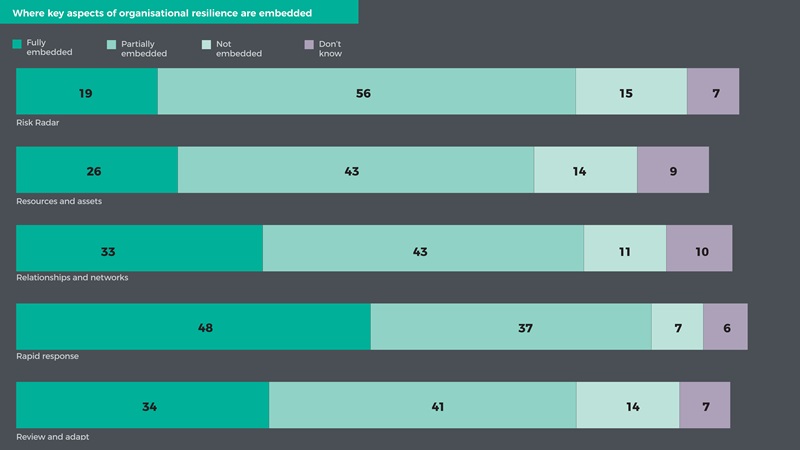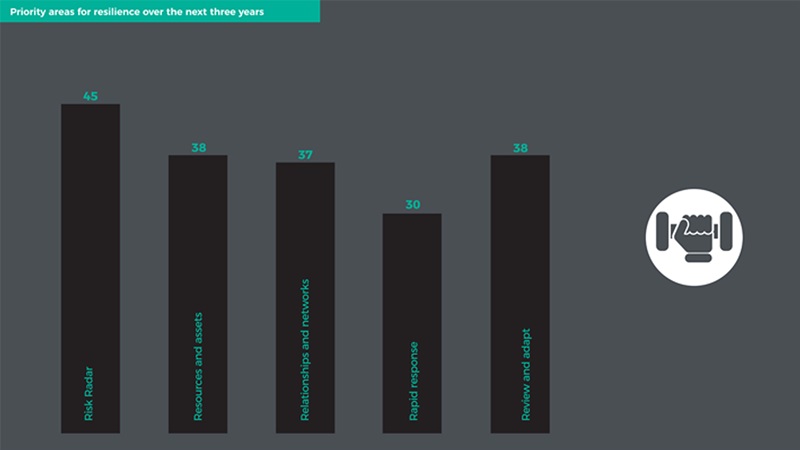We studied a number of leading organisations that have managed to create a resilient culture in order to protect their business, brand and reputation. This was in response to this key question, “How can businesses ensure their future success against the growing array of risks?”
Key Facts
-
We produced a report on behalf of the UK association for risk and insurance management professionals, Airmic, entitled Roads to Resilience.
-
We interviewed those with risk management responsibilities at eight different organisations which have achieved resilience in different ways.
-
We found five capabilities or principles in common and this report refers to them as the five ‘Rs’ (listed below). It is not sufficient to have just one or even most of them; an organisation must seek to have all five to achieve resilience.
- Funded by Crawford, Lockton and PwC (PricewaterhouseCooper) on behalf of Airmic.
Impact of our research
We interviewed executives, management and staff with risk management responsibilities, including CEOs, at eight organisations.
We found overwhelmingly that the key to achieving resilience is to focus on behaviour and culture. This may involve fundamentally rethinking and challenging prevailing attitudes towards risk. Traditional risk management techniques, while essential, do not themselves create a culture of resilience.
The five ‘Rs’ an organisation must seek to achieve resilience are:
-
Risk radar: the ability to anticipate problems and see things in a different way will help an organisation develop an early warning system and be able to seize new opportunities.
-
Resources and assets: well-diversified resources and assets provide the flexibility to respond to opportunities as well as adverse or changing circumstances.
-
Relationships and networks: risk information flows freely throughout the organisation up to directors to prevent the ‘risk blindness’ that affects many boards.
-
Rapid response: capability that prevents an incident escalating into a crisis or disaster because people and processes are in place to quickly restore things to normal.
-
Review and adapt: learn from experiences, including near misses and make the necessary changes and improvements to strategy, tactics and capabilities.
A recent study on the impact of Roads to Resilience suggests that many risk managers have made impressive progress in their contribution to improve resilience. The majority of respondents indicated that their organisations have embedded, to some extent, the five principles, with particular progress being made on ‘rapid response’, ‘review and adapt’, and ‘relationships and networks’ where 48%, 34% and 33% have fully embedded the principles respectively.


Why the research was commissioned
Resilience enables organisations to deal more effectively with both expected risks and the unexpected ones. They are more responsive to their customers and the markets they serve, their staff and suppliers are motivated and loyal, they gain trust by being more dependable and achieve better results for shareholders.
The incentive to become resilient goes well beyond merely avoiding disaster for boards. Companies that are confident in their risk management have the confidence to be more enterprising and entrepreneurial, thereby not only identifying risks but also seizing opportunities.
Why Cranfield?
This research followed the acclaimed Roads to Ruin report, published by Airmic in 2011, which looked at high-profile crises involving 23 companies which left their reputations in tatters.
Our main objective was to help companies avoid corporate catastrophe by learning from those who are leading the way in creating resilient organisations.


